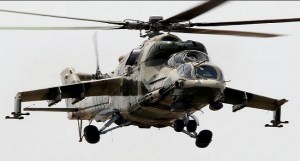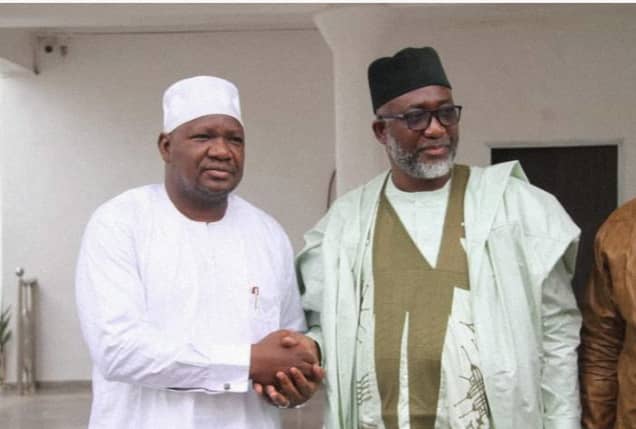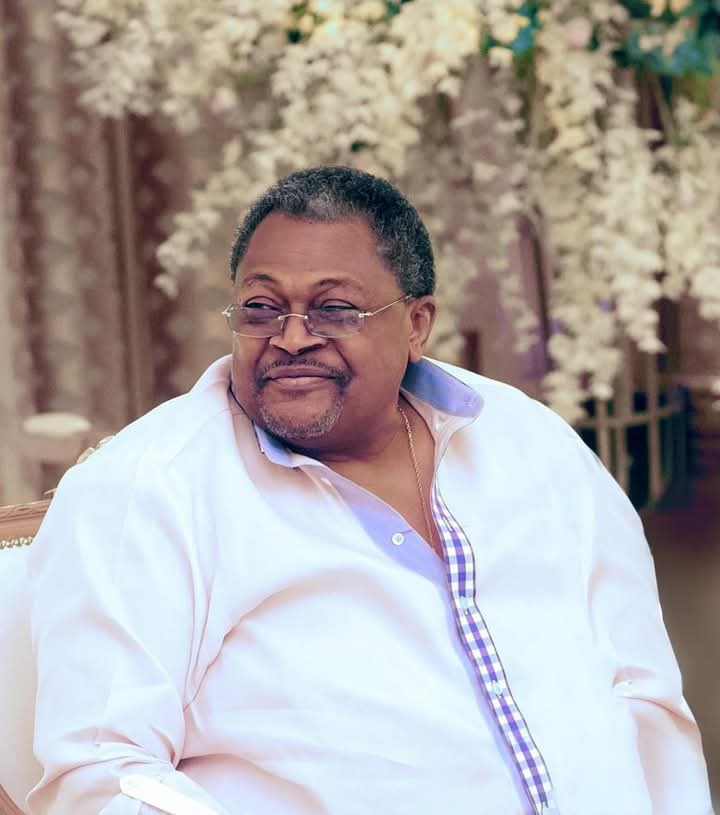*Part 1: NATO, The Warsaw Pact and Soviet Union
What does Putin really want?
What can stop this war?
Why did NATO encourage Ukraine to join NATO?
Isn’t Russia justified in opposing Ukraine’s application to join NATO, since it would bring foreign troops (and by extension, weapons) to Russia’s borders?
But if that is Russia’s justification, don’t Lithuania, Latvia and Estonia (NATO members since 2004) also share borders with Russia?
Why didn’t Russia go after them before they joined?
These are questions that have been asked in the past 4 weeks since the Russian invasion of Ukraine began. However, providing dispassionate, nuanced answers to these questions, is impossible without understanding the historical background and context. It is not quite as simple as Ukraine wanting to join NATO against Russia’s objections (or whether Russia even has a right to object). As incredible as it sounds, everything that has happened in the past 4 weeks, really started in 1945 after World War 2. Yes, you read that right. What is happening today can only really be understood in the context of that historical background – the history of how and why NATO was set up, the history of how and why the Warsaw Pact was set up – and why it collapsed; the consequences of the collapse of the Soviet Union; the history of why former Soviet States joined NATO; and how all this led to Russian tanks and missiles breaching Ukraine’s borders in 2022 (strictly speaking, Russian tanks and missiles have been in Ukraine since 2014, but we’ll get to that too).
After World War 2, which lasted from 1939 – 1945, Europe was divided into spheres of influence between the US and the Soviet Union – Western Europe for the US and Eastern Europe for the Soviet Union. Also included in this new world order, was the separation of Germany into East and West – East Germany controlled by the Soviet Union and West Germany controlled by the US and its allies. Following defections in their hundreds of thousands by East Germans to West Germany, the Soviet Government erected the Berlin Wall in 1961 (a 13 feet, 155km concrete barrier), which almost entirely stopped all migration between the “two Germanies”.
The pre and post war tensions that had existed between the US and Soviet Union (the world’s two superpowers at the time) was somewhat suspended in the latter parts of World War 2, as they worked together to defeat Nazi Germany. Once the war was over, the arms race between both countries picked up rapidly, thus birthing the “Cold War”. The world watched nervously as both countries racked up arms and accelerated their nuclear programmes, as a deterrent to the other from a potential attack. This was when the term “mutually assured destruction” was popularized.
Shortly after the Work War, two collective security treaties were signed, initially between France and The UK (Treaty of Dunkirk) and later expanded to include the Benelux countries – Belgium, The Netherlands and Luxembourg (Treaty of Brussels). In 1949, the Treaty was further expanded to include The US, Canada, Portugal, Italy, Norway, Denmark and Iceland. This new Treaty is what became the North Atlantic Treaty. NATO – North Atlantic Treaty Organization – is therefore the military structure that was set up to implement the Treaty.
The idea behind NATO was to provide collective defence from any attacks by an external party. This is why Article 5 of the Treaty specifically states that “an attack on one member shall be treated as an attack on all members”.
In reality, the external party that these countries were worried about was the Soviet Union. A shaky alliance had existed specifically to help defeat Hitler’s Germany, but once that had been achieved the old tensions (which never really went anywhere) were reignited. The tensions worsened when West Germany, which had been demilitarized as part of the consequences of the role of Nazi Germany in starting World War 2 (Germany also played a major role in starting World War 1), was allowed to rearm its military and join NATO in 1955. In response, the Soviet Union set up a similar organisation with countries within its sphere of influence, i.e. Eastern Europe. This became the Warsaw Treaty Organisation (aka the Warsaw Pact) and was made up of the Soviet Union, Albania, Bulgaria, Czechoslovakia, Hungary, Poland, Romania and of course East Germany.
At the time, most of the countries in the Warsaw Pact were headed by communist Governments (in line with the Soviet Union). However, as these countries began to move towards becoming constitutional democracies, it became clear that the Warsaw Pact could not be sustained as a military alliance. In a bid to avoid this, Russia employed brutal means to bring the “erring” nations back into the fold. For example, when the Hungarian Government tried to withdraw Hungary from the Warsaw Pact in 1956 (during the Hungarian revolution), Warsaw Pact troops invaded Hungary, removed the Government and crushed the revolution. A somewhat similar scenario played out in Czechoslovakia in 1968, when about 500,000 Warsaw Pact troops invaded the country to stop planned reforms that would ultimately have led to Czechoslovakia becoming a constitutional democracy and an inevitable withdrawal from the Warsaw Pact.
I cite these two examples to make a broader point about the key differences between NATO and the Warsaw Pact.
1. NATO was (is) an alliance of countries that came together through dialogue and shared – perhaps justified – fear of a Soviet attack. The Warsaw Pact was an alliance of countries that came together by the sheer will of the Soviet Leadership and the fear of consequences of a refusal to join – or an attempt to withdraw, as Hungary and Czechoslovakia tragically discovered. That is not to say the Soviets did not have supporters in these countries, but the Soviet domination of Eastern Europe meant that joining the Warsaw Pact was not seen as optional.
2. Despite US domination, NATO decisions were (are) taken by consensus. The Warsaw Pact decisions were taken by the Soviet Leadership without input or permitted dissent from member countries.
3. The leadership of NATO was (is) rotational and has term limits. The leadership of the Warsaw Pact was made up of only Soviet officials appointed by the Soviet leadership for as long (or as short) as the Soviet leadership wanted.
One of the major implications of the above, was that within these countries, a resentment of Soviet domination built up over time and eventually boiled over. For the next few decades, popular uprisings in these countries culminated in the overthrow of the communist governments in virtually all the Warsaw Pact countries. Between 1989 and 1991, the governments in Albania, Poland, Hungary, Czechoslovakia, Romania and Bulgaria were all overthrown. The effects of these uprisings spilled over into East Germany, resulting in their own popular uprising in 1989 and eventual demolition of the Berlin Wall in 1990 and reunification of East and West Germany in October 1990. The Warsaw Pact therefore ceased to exist from February 1991.
These history changing events were being watched nervously by the Soviet Government in Moscow and in horror by a young, idealistic Russian KGB intelligence officer based in East Germany. That officer would become Russia’s President 10 years later. His name: Vladimir Putin. As these events unfolded, reforms that had been started by the Soviet leader Mikhail Gorbachev, to give states greater autonomy, had the unintended consequence of demands for even more autonomy. Between 1990 and 1991, newfound freedoms, including freedom of speech and press freedoms, led to more vocal calls for independence from most Soviet States. Using a never before used Soviet law that allowed states to secede if two thirds of their populations voted in favour, Soviet states began to openly call for a dissolution of the Union. The failure of a coup by hard-line Soviet nationalists within the Soviet Government and KGB officers to reverse Gorbachev’s reforms and re-establish control over the states, proved to be the death knell of the Soviet Union. Multiple states declared their independence shortly afterwards. In December 1991, led by Russia, Ukraine and Belarus, the Soviet States signed an accord dissolving the Soviet Union. Mikhail Gorbachev formally resigned on 25th December, effectively ending the Soviet era.
The Soviet Union split into 15 independent countries (Russia, Lithuania Georgia, Estonia, Latvia, Moldova, Kyrgyzstan, Uzbekistan, Tajikistan, Azerbaijan, Belarus, Armenia, Turkmenistan, Kazakhstan and Ukraine). In what is either a cruel or amusing twist, every former member of the Warsaw Pact and 3 of the 15 former Soviet countries (Estonia, Latvia and Lithuania) are now members of NATO.
This brief history lesson above should therefore provide some context into Russia’s anger about Ukraine’s NATO ambitions. For Russia, it was not just a question of “troops on our borders”, it was the historical joke that the countries once “allied” in a Pact against NATO, were now part of NATO. It was also the irony that countries that once took orders from the Soviet Government in Moscow, were now in a military alliance that was set up to counter the threat – real or imagined – from Moscow. This was partly what Vladimir Putin was referring to when he said, “the greatest geopolitical disaster of the 21st century was the collapse of the Soviet Union”.
Yet, could the Warsaw Pact truly be called an alliance in the true sense of the word? If you join a partnership with a gun to your head, could that still be called a partnership? If you are able to get the gun away from your head and you join a group that has bullet proof vests and bigger guns, who vow to defend you, why would you not want to join them?
This sets the historical context leading up to the Soviet collapse. And concludes the first part of this article. The second part will look at the immediate aftermath of the Soviet collapse, Ukraine’s decision as a newly independent state to give up its nuclear arsenal (which at the time was the third largest in the world), NATO expansion to the former Warsaw Pact and Soviet States. And the rise of that young KGB intelligence officer, who had spent hours burning classified documents during those chaotic days of the uprising in East Germany. The rise of Vladimir Putin.
* Lolu Elegbe (LLB; LLM International Law; PhD student International Relations)





